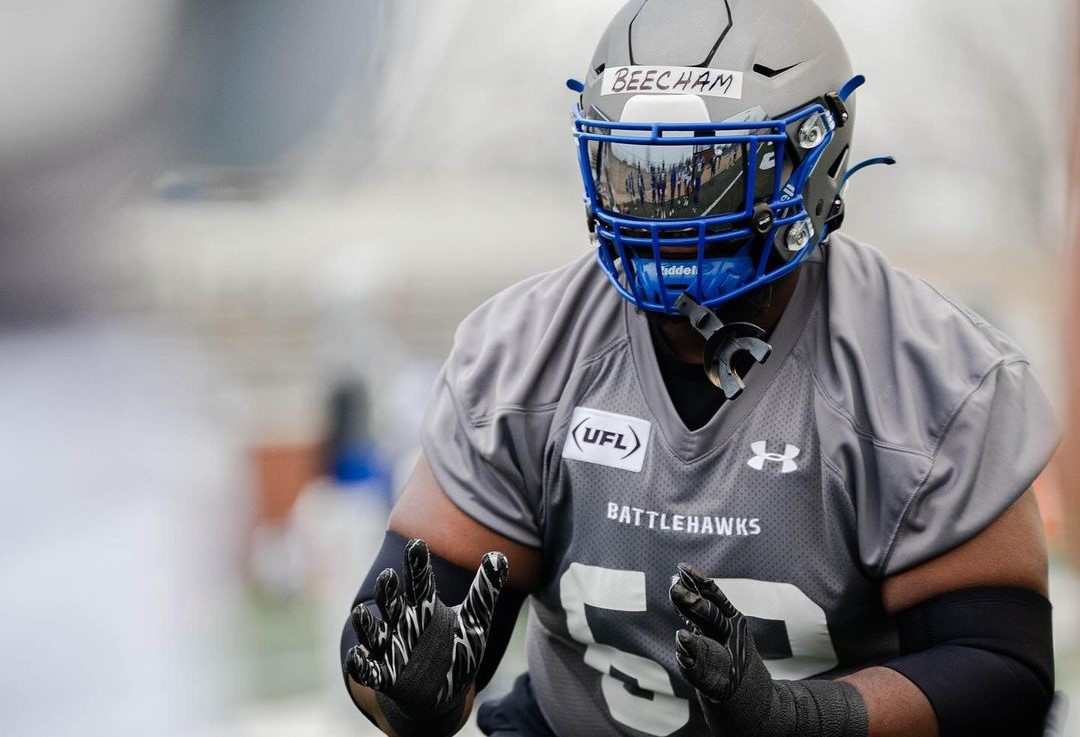
Through the first two weeks of UFL training camp, it’s been all smiles from the players on social media. They’ve been cracking jokes, working hard, and overall appearing to have fun playing the game of football. For many, that fun will end this weekend when teams have to pare down their 75-man rosters to 58.
That’s 17 cuts per team, or roughly 136 players overall who will be out of a job. Some may get placed on injured reserve, some will be claimed by other franchises in the league. But for the rest, it could signal the end of their dreams of playing professional football. You’ll never hear a head coach say cuts are easy; in this climate, they’ve become even more difficult as the XFL and USFL have merged, giving way to a more accomplished crop of talent.
UFL teams will hold scrimmages against each other this weekend and will make decisions about cuts following those practices. In media appearances over the last week, each head coach has spoken of the difficulty they expect to have in deciding those releases this year.
After the first few days of camp, Birmingham Stallions Head Coach Skip Holtz was impressed with how his team looked. “It’s going to make these cut-downs extremely difficult,” he said. “So the next ten days is a really hard evaluations process for where we are and who are going to be the 58 that are going to get through this first cut that we’re going to have to make.”
St. Louis Battlehawks Head Coach Anthony Becht said that while the scrimmage is important, a single practice is unlikely to make or break any player. “If somebody can pop in the scrimmage, that can help them, but I think we feel like we got a good idea of who those guys we’re looking at to making that first round of cuts,” he said.
That doesn’t make those cuts any easier, though. “Lot of tough calls to make,” he said. “…It’s going to be tough having some guys go home but they’ll be the first guys back if we ever need to call (anyone) back.”
The competition across training camps was expected to rise with the merger, and several coaches have used the “c” word in describing their team’s preseason work. Curtis Johnson of the Houston Roughnecks said that competitiveness “has really, really stood out.”
“We got cut-downs early that, man, I know a year ago would’ve made the team and would’ve been really good players for us,” he said. “I thought it would be easy getting from 75 to 58, but every day I look, special teams is becoming more and more important with how we make these decisions.”
Another head coach to cite his team’s competitive nature this month: John DeFilippo of the Memphis Showboats. “I told our guys, ‘this is going to be the most competitive training camp I’ve ever been a part of,'” he said to reporters on Friday. “There’s not a lot of time until the first cut-down comes. I told our players…’you better start fast. You can’t have a bad day. You just can’t’.”
If getting from 75 to 58 is difficult now, those eight extra cuts to reach the 50-man regular season maximum may be excruciating for these coaches. “You have the best players of both leagues on these teams,” said DeFilippo. “To go from 75 to 50 is hard. I look at our roster, it’s hard to find 25 guys that you don’t want on your football team. It’s not hard, it’s impossible.”
For players that don’t make UFL rosters, it won’t be the end of the road. There are myriad professional options these days for players, from the National Arena League to the Indoor Football League to the European League of Football to the Canadian Football League, and even to the returning Arena Football League. That doesn’t make the conversation from coach to departing player any easier, however, especially for a league that prides itself on being a league of opportunity. The cold reality is this, like the NFL, is still professional football, and in the end, cuts are the unavoidable cost of doing business.











